Saab has received a new order worth around SEK 2.6 billion from the Swedish Defence Materiel Administration (FMV) to continue conceptual studies on future fighter systems between 2025 and 2027, the company stated.
The work will cover manned and unmanned aircraft concepts within a broader “system of systems” framework, combining technology development and demonstrator programmes. Saab confirmed that it will continue its collaboration with FMV, the Swedish Armed Forces, the Swedish Defence Research Agency (FOI), GKN Aerospace, and other national industry partners as part of the effort.
According to Saab, the new contract represents an extension and expansion of a previous agreement signed in March 2024.
“This order sets the next step on our joint journey in delivering innovative solutions to meet future operational needs of the Swedish Armed Forces and other customers,” said Lars Tossman, head of Saab’s Aeronautics business area.
The studies form part of Sweden’s broader research into future air power options beyond the JAS 39 Gripen, which Saab continues to upgrade for national and export customers. The company said the new phase will help refine technologies and operational concepts that could underpin future manned and unmanned platforms for Sweden and its defence partners.
Sweden’s push for a future fighter comes from a long tradition of building its own combat aircraft. For decades, the country’s defence policy has centred on self-reliance and freedom of action. From the Viggen in the 1970s to the Gripen in the 1990s, Saab has produced aircraft tailored to Sweden’s geography, limited resources, and export ambitions. The latest Gripen E and F models are the most advanced yet, but the future-fighter programme marks the start of a new cycle of design and experimentation.
Saab’s current work views air combat as a networked ecosystem rather than a single aircraft. The studies include manned jets, autonomous drones, and the systems that link them together.


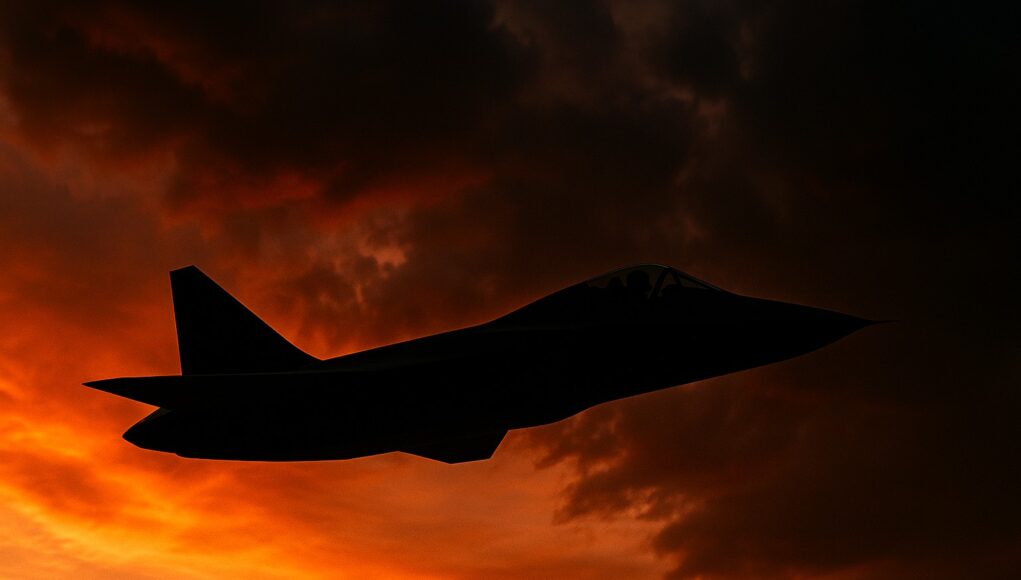

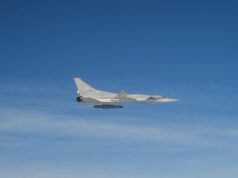
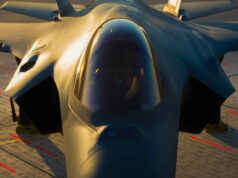

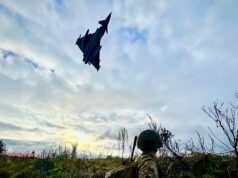
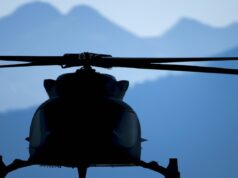

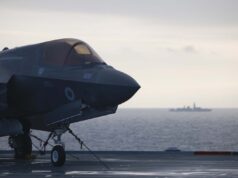
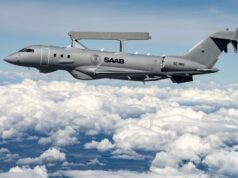
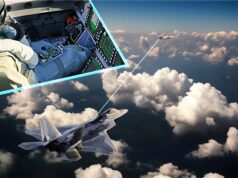

Possible collab with GCAP? Sweden have never been able to develop their own fighters from scratch, and we are certainly the friendliest of the available consortiums.
Or should that be consortia?
Consortiarum? Been three years since I did Latin.
Do you say comments in fora or forums? The persistent use of Latin plurals in (some and by no means all) words when spoken in English is bizarre.
It would be consorts surely…..?
But that might be misunderstood….
I think you just mean ‘best of the possible possible project partners to form/enlarge a consortium’
Either consortiums or consortia is fine. We know what you mean.
To some extent who cares, Sweden has a much smaller amount of money than the UK but does much more with it, in fact I think EVERY country in the whole world does more with less, we could have our Taz and have better roads, health and defence if we cut the meaningless paper shufflers
Why do people think the solution to all of the nations issues are to cut civil servants. It would hardly scratch the surface. Thousands have been cut over the years Hasn’t made any difference
Its not the wages that matter, its the damage they deliberately cause, the making work for themselves that impinges on every aspect of ou lives. The real damage is done by their actions not their cost, and I dont mean a ‘cut’ I mean getting rid of ALL of them.
So who does the work. You? What’s the alternative?
The alternative is to employ a MUCH smaller number of people, people who are PRO UK for only those jobs we actually need doing.For example we really dont need ‘planing officers’ costing more for the planning permission for a lower thames crossing than the Chinese can buld a longer, taller larger bridge for. We dont need councillors deciding to employ people to take down union and st georges flags, we dont need more civil servants in the mod than fighting men,m dont forget it was the ‘governments chief scientific advisor’ – a BOTANIST – that destroyed TSR2, it was a civil servant that destroyed the railways, it was a ciil servant that decided that hundreds more civil servants were more important than bullets for our guns, a civil servant that decided not to put money into BL while the Germans poured money into VW (which now owns half the motoring related companies round the world , including lorries and buses) etc etc etc etc etc EVERY udff decision is from the civil service including the fuck up over the Chagos islands.
So who is better qualified to do all this work? You?
Frankly I suspect my dogs last turd could do a better job. The civil service have been deliberately destroying this country since before the first world war, read what they did to kill our own troops on the battlefield – refusing to let any other company make shells while the royal ordancnce at woolwich was unable to produce more than a shell per gun per day. The Germans must have wondered what the hell we thought we were doing.,
I suspect this is a direct microcosm of exactly what the many and varied MoD committees find themselves analysing in great detail when they discuss military programmes and explains why they never actually come to any conclusions on the actual important stuff they were supposedly set up to decide upon.
Oh dear, I must be part of ‘the system’…
Wasn’t Sweden a technology partner or some such, back when it was just Tempest and before the GCAP program crystallised around UK, Italy and Japan?
Yeah they put a little money in to the early R&D and were particularly interested in the drone wingmen aspect, however they realised the computer and sensor tech for Tempest wouldn’t be transferable into the existing Gripen platform due to weight/electricity requirements.
I expect the Swedes will also want a next-gen fighter that is small and light enough to operate from roads and rough air strips, like the Gripen, and that isn’t the direction the Tempest is heading in!
Yeah the have different requirements for sure. the US and others want their 6th gen to be extremely long range- the US for the pacific of course. Sweden probably wants a smaller defensive fighter.
Agree they want air defence rather than long range bombers.
Yep there will definitely be a place in the market for a small light 6th generation fighter.
I have wondered whether it might be productive for Edgewing to essentially lend SAAB some key technology, such as engines, RAM and radar modules, and just tell them to go off and develop their own lightweight fighter.
They would still be able to suit it to their needs, but there would be a lot of GCAP industrial content and we would be able to produce it ourselves if necessary.
I can’t see why not. We are constantly told that the airframe is not the most expensive part of the plane and it’s about developing the systems. So why not leaverage common systems in multiple planes for different situations, including a light STOL fighter for disperersed operations?
They left when it was clear that a jet built around the UK, Italy and Japan’s requirements wouldn’t suit their needs. The technology itself might still be attractive to them.
They have digital twinning technology vital to facilitating complex projects of this nature that even the US exploits for their own projects so they have fingers in various pies and important to many and keeps their options open.
That said it will be interesting to see how they could possibly produce a 5th/6th Gen fighter without being part of a bigger grouping. Problem for them is what they seek and what others are planning aren’t a great match so maybe it will concentrate on internal and associated systems than full airframe commitment. Loyal wingmen could be different mind, surprised they haven’t been more proactive in that area with others.
SAAB is heavily invested in Helsing and are already running field tests with autonomous Gripen jets.
They will likely seek partnership for avionics and engine but develop their own airframe and software..
Wasn’t there discussions previously to bring Sweden onboard for GCAP but they subsequently ruled this out in favour of designing their own aircraft?
Yes but Saab wanted to make it a hatchback.
Don’t be ridiculous… the argument was over which side the steering wheel would be on!
I suspect a combo of them used to not being part of NATO when it comes to decisions snd old habits die hard and gcap likely to be very expensive. They want low cost allowing for higher volume.
They probably want a single engine fighter. I’m guessing that where Tempest will be quite high end, but not in NGAD territory, Sweden will want a lower end of the market stealth Gripen.
Photos of reduced scale test model experiments are in the public domain and they look very cool.
Yes they don’t need a very large long range strike fighter of the sort Tempest is becoming, they need flexible quick response fighters that can be operated from rough strips but with high end electronics and effective missiles. Can see their logic, to put it simply they need Spitfires as opposed to 1944 Tempests due to their immediate environment and risk a first strike from Russia with little warning.
That Cold War ‘dispersal’ technique, which the Swedes use, making use of highways, etc, in the way Harriers were once used seems to be back in fashion.
Tonight we are using set of balls.. er, tactics number 3
It just seems like the west is hell bent on large, twin jet, hi tech and very expensive aircraft. That’s 4 aircraft all trying to compete for export orders and due to the costs end up with even fewer aircraft.
Sweden has always gone then their own way and have a taste for single engine, simple to service, robust but high tech aircraft and this-looks no different. I have said this before but we need mass and this sort of aircraft could be just the ticket.
Especially if they are able to incorporate a RR engine.
Well Bae we’re specifically trying to market Gripen and Typhoon as this low/high mix when they signed cooperation agreements back in the day, didn’t get much traction however in combined sales of both to any customer. Fact is now if Britain was where Sweden is then we would want such an aircraft they envisage and prefer and I suspect if Sweden were where we are then they would want a large, twin engined strike fighter utilising long range internal weaponry that can defend and attack over wide areas over Europe, the North Atlantic and the North Sea, that’s vital for us to defend and preferably control. Japan needs similar for its own location surrounded by ocean as does the US now as its bases in the Pacific become less safe and China takes precedence in their strategic considerations. It’s simply horses for courses. A Gripen like fighter would only be useful to us if we were frontline basing but as recent events have shown with Typhoons defending Poland from the UK that’s not a strategic structure we are ultra keen on, I guess vulnerability is a big factor there in any conflict especially as the Sweden environment isn’t the norm in most of Europe. Sadly mass is then the problem but ‘cheap’ less capable aircraft for us in our strategic position I suspect isn’t really going to cut it I fear unless we can find extra cash for a squadron we wouldn’t otherwise have but the argument over not buying more of the more expensive Tempest instead would be a visual disaster for any Govt. Between a rock and hard place there.
For the UK and Japan in particular, both need a jet with long legs. Italy doesn’t really need a very long ranged aircraft. The UK is tasked by NATO to patrol Greenland, Iceland and UK (GIUK) areas. A short ranged aircraft like the Gripen wouldn’t be suitable for this role.
I definitely see a market for a next gen Gripen, which could compete equally with the F35.
Italy has the same enemies as the UK and they’re at similar long range. That’s why they bought Tornado and that’s why they’re in GCAP.
Depends on where it’s operating from. Operating out of Iceland or the Faroes would enhance its useful range in that Greenland-Iceland-Faroes-UK airspace. But yes, likely still a need for a larger and probably twin-engined aircraft for a useful range, reserve, safety factor, onboard radar/ew, possible second crew member and worthwhile weapons capacity given the tactical and geographic environment and the likely need to go hunting. Thus, a cheap solution would be no solution using present and foreseeable available technology.
If Germany leaves the FCAS program, would it possible for them to collaborate with Sweden on a sixth gen aircraft. France want’s an aircraft that is capable of operating from carriers and carrying nuclear weapons, Germany and Sweden don’t.
I think breaking defence under the article ‘Germany and Sweden not discussing FCAS partnership, say defense ministers’ they are not in talks to collaborate.
Germany is actively Considering alternatives to FCAS. It is a real shame we didnt join Tempest.
Promise not to be dicks, and ask to join.
Germany may well have cooked its TEMPEST goose with the issues over Typhoon export.
They might be allowed to screw their own together but workshare and export control debates will be off the table.
I’d not allow anybody in with the exception of Sweden, who won’t for previously stated reasons.
We’d be absolute mugs….and you just see this government caving in to it.
The big European players may be allies, but even allies screw over other allies for their own ends.
NO.
Germany don’t have any 6th Gen tech to offer the program anyway.
So all they can do is to very slowly absorb tech.
Maybe we could offer Sweden a more collaborative form of the Gripen development, with GCAP technology transfer in exchange for e.g. AH140 purchase?
I think plenty of GCAP tech will filter into any Swedish project, engine tech (already debating this for Gripen) electronics, sensors , weapons all manner of things will cross fertilise I suspect for the benefit of both. If not us it will be with the Franco/German effort but I would see that very much less tasty for them.
I’d say that there is a few other countries that should be allowed to join, but only as a second tier partner at this point to avoid complications and delays. GCAP is supposed to have extremely long range strike abilities, which would be attractive to the likes of Australia and Canada.
I agree, anyone else (ie Germany if FCAS collapses) would be a second tier working on subsystems. All the major work on GCAP has been allocated. There would be very little manufacturing available, it’s not an attractive proposition to any country that wants to be a major player in a project.
The deal should be uk is buying loads of German armour, Germany needs to buy tempest… but that won’t happen either
Totally agree and I doubt any prospective fall out with Japan who are vital to the project would allow any new deep integration with others at this point, 2nd tier with them being able to build their own is the only way ahead in that regard and/or loyal wingman project ts which is/was what Germany was going to lead anyway with its Franco/German mess.
Germany is possibly in a cool position, where it could concentrate on producing the killer collaborative aircraft that will work with GCAP, SCAF, FX-AA and F-47 (not to mention Gripen NG). It can sink billions into an area that no other large country can because they are all too busy funding a core fighter, or two.
We have seen Britain’s recent carrier requirements in this area dismissed as impossible, in part because it would need a clean-sheet design and because we aren’t prepared to put in the time or the money. This is the kind of area in which Germany should seek to excel.
Agree Jon it’s where they want to excel already knowing France will lead if not totally control the core manned aircraft design and development, so there is much we can do to tempt and cooperate with Germany with those support platforms that we will struggle to produce as we focus on GCAP.
Big strategic error on their part, Brexit animosity led over common sense sadly and they are suffering for that now.
Interesting to imagine Germany going in with Sweden as Bleak Mouse ponders, could make some sense but as my comments above on Uk/Sweden mismatch there is a not dissimilar mismatch between Germany/Sweden too, though arguably by no means as pronounced. But Germany will want a very capable aircraft with considerable internal weaponry with substantial defence/strike capabilities that would I think be compromised in that union. Perhaps the bigger problem would be the financial load on Germany of middling it around those German requirements that probably exceed those of Sweden. What would the export potential be of such an aircraft too? Gripen has gained some traction because of a lack of Western competitors especially in Countries wary of buying American. With Turkish and South Korean competitors that would likely match or near match and probably exceed in some areas, available soon and probably cheaper would there be an export market for such a paired down aircraft available in a decades time?
And as others have said Germany needs France or Britain for some of the more advanced features esp stealth, Sweden offers some very advanced capabilities esp in electronic warfare solutions but it to has very large gaps in other areas, stealth again, no doubt. So any such project would be very reliant on others or fall short in those areas.
No. It is not.
We Swede’s have always designed and manufactured our own planes cuz we have been neutral country, we never had any collaboration with someone due to our neutrality.
You must be thinking then we bought one plane from UK after WW2..
We never had any collaboration with anyone due to we have been a neutral country for 180 years….and we still don’t collaborate with others in our design and manufacturing of the planes like Tunnan, Lanzen, Draken, Viggen or any of the Gripen variants and versions…
You don’t know what you are talking about, or are you just another Russian bot scared of Swedish plane’s?
“Since the Viggen”, Draken surely!
Yes but they were just giving the first and last iterations of their fighter business I think, a bit like we might say from from Meteor to Typhoon.
Draken wasn’t even their first jet fighter.
I do not understand your comment.
Either way this could be good news for the UK – nearly 40% of the Saab Grippen comes from the UK. BAE have reduced involvement in Saab since then, but they are still close partners.
30% according to the Saab website. Yes, I was going to say the same about the UK, no doubt having subsystems involved in their project.
GKN Aerospace is involved, though I expected it is thought Volvo Aerospace, which they own
Sweden will struggle to fund a fifth generation jet just as it is struggling with new AIP submarines. Now looks like they will cost >$1.3b each and be years late; ordered in 2015 for delivery by 2024, now 2031 and 2033.
Sweden will not struggle to fund a fifth generation fighter – because “Flygsystem 2020” is about a SIXTH generation fighter..;)
However, SAAB stopped talking about “generations” of fighters years ago, since technology advance so rapidly and they prefer modular designs of subsystems and capabilities (easy to upgrade seemlessly and continously).